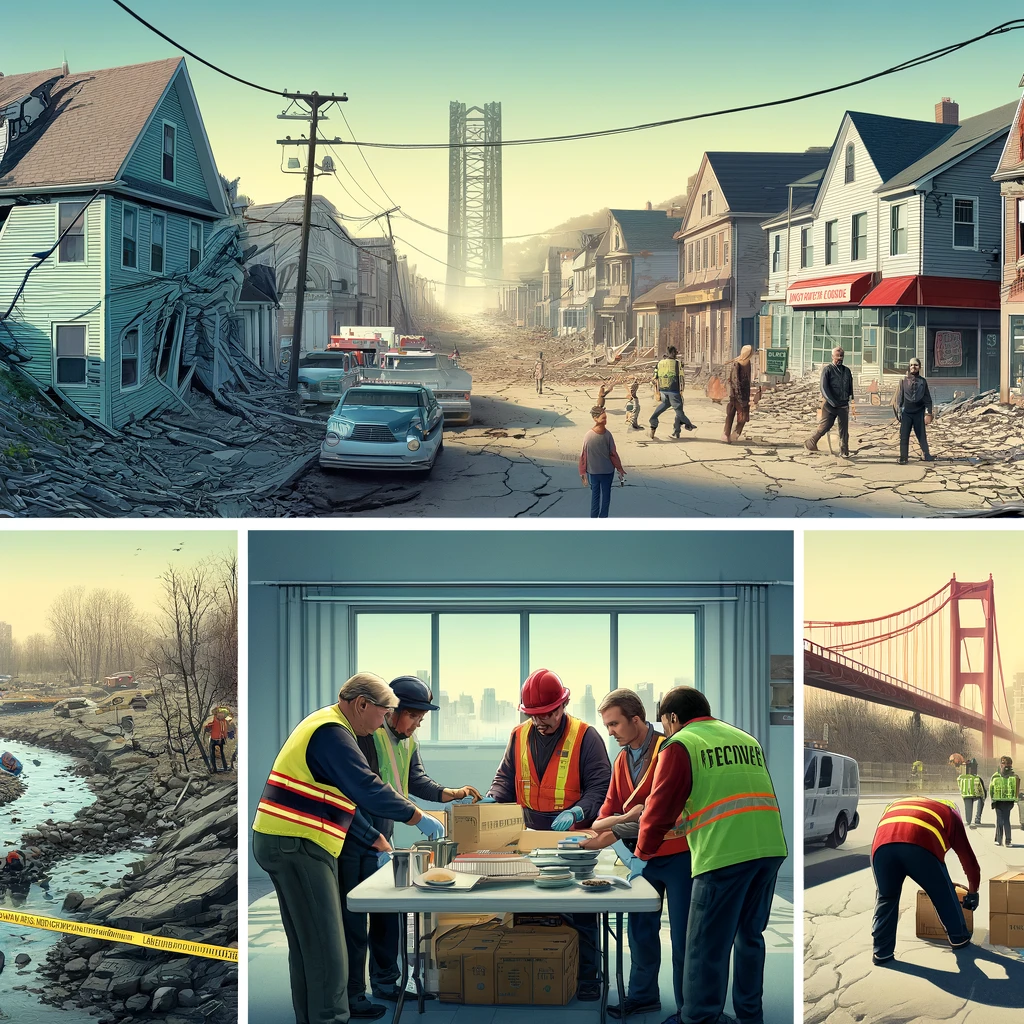
In the aftermath of the recent earthquake in New Jersey, the state finds itself grappling with a scenario that seemed far-fetched until it unfolded with startling reality. The seismic event, unprecedented in the state’s recent history, has left communities across New Jersey in a state of recovery and reflection.
The tremors shook the very foundation of what many considered a seismically serene region, causing not only physical but also psychological aftershocks among the residents. Homes and buildings, some with historical significance, now bear the scars of the quake, with cracked walls, shattered windows, and in some cases, structural instabilities that necessitate urgent attention.
The response to the earthquake was swift, with emergency services deploying across the affected areas to assess damage, provide aid, and ensure public safety. The resilience of New Jersey’s communities was evident as neighbors helped neighbors, local businesses offered support, and shelters opened their doors to those displaced by the quake.
Infrastructure faced its own set of challenges, with roads and bridges subjected to rigorous inspections to gauge the extent of the damage. Utilities were disrupted, leaving many without power, water, or gas, further complicating the recovery efforts. The state’s transportation network, a lifeline for its densely populated areas, was also affected, with disruptions in train services and road closures impacting daily commutes and economic activities.
Environmental concerns emerged as well, with the quake disturbing industrial sites, leading to fears of potential chemical spills or gas leaks. The state’s environmental protection agencies were on high alert, monitoring the situation closely to prevent any secondary disasters that could compound the quake’s impact.
Amid the turmoil, the spirit of community shone brightly, with volunteers and aid organizations stepping up to offer assistance, distribute supplies, and provide emotional support to those shaken by the event. The earthquake prompted a collective introspection on preparedness, highlighting the need for comprehensive disaster planning and resilient infrastructure in a state more accustomed to dealing with hurricanes and snowstorms than seismic upheavals.
As New Jersey navigates its path to recovery, the earthquake serves as a stark reminder of nature’s unpredictability. It underscores the importance of adaptability and preparedness in the face of unforeseen challenges. The road to normalcy may be long and fraught with obstacles, but the determination of New Jersey’s residents and the solidarity among its communities provide a strong foundation for rebuilding and healing.
In this time of recovery, the earthquake’s aftermath is not just a story of loss and damage but also a testament to human resilience and the strength of community bonds. It is a chapter that will be etched in New Jersey’s history, a narrative of overcoming adversity and emerging stronger, together. As the state rebuilds, the lessons learned will undoubtedly shape its approach to disaster readiness and community support, ensuring that New Jersey is better equipped to face whatever challenges the future may hold.